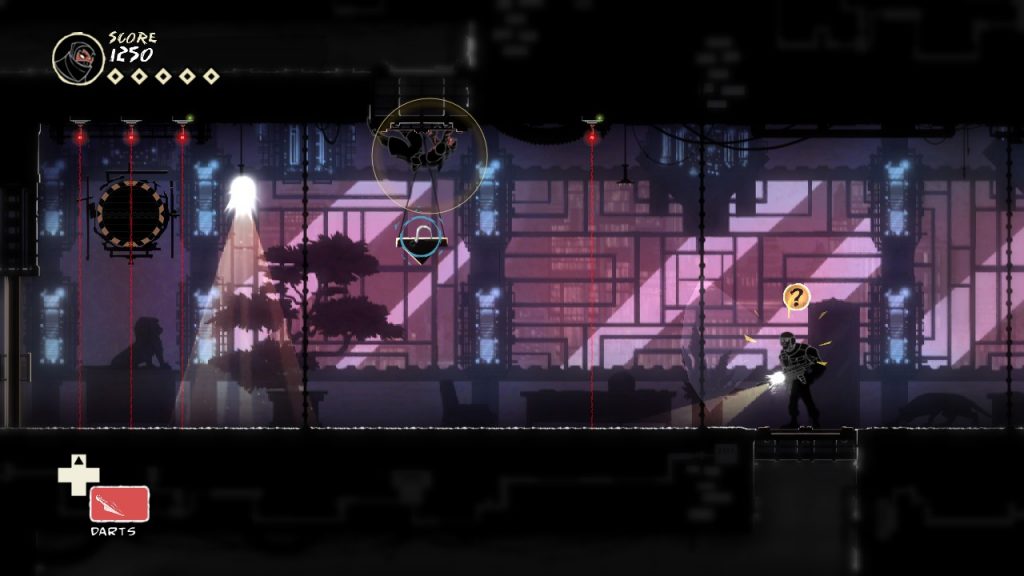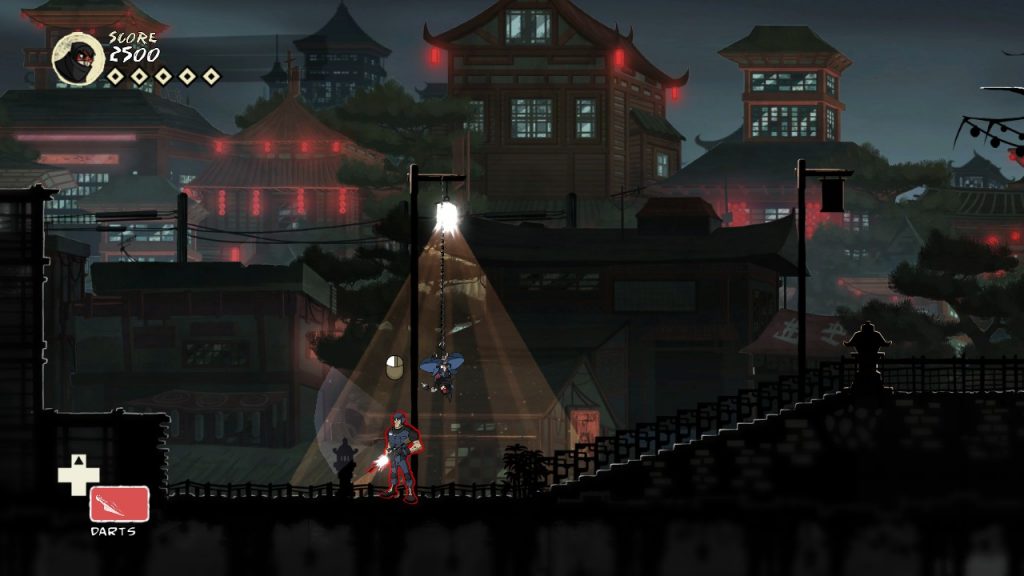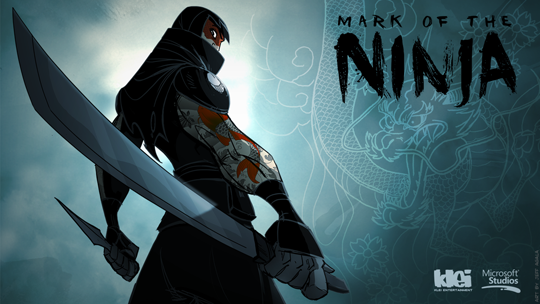Guest Contribution by Matthew Marteinsson
At first listen you can tell Mark of the Ninja is a game with a wide dynamic range. The game is all about being hidden and safe or out in the open with the danger of being seen. A very binary visual contrast between being hidden and visible informs the player clearly which state they are in. When hidden, the player has got time to observe what guards are doing and plan your approach. When they’re spotted, it’s a hurried dash to get back to a hiding spot or take out the threat. So how did the audio support having such big contrasts in gameplay?
My overall audio philosophy with games is your sounds always need to be either world building or player informing. That mindset, combined with a very dynamic gameplay, naturally evolved into a large dynamic range to the audio. One of the first things we did was plan what we were going to do with music. We knew we didn’t want wall to wall, in your face music. What we did want was for the music to signal a state change in gameplay. But we did want to have at least some music for playing the entire game.
We settled on a base level of music as an ambient piece for each world. It is very low key and at times blends into ambient world sounds. That’s our world building/mood setting stuff. Then, if a guard sees you, it kicks into a high energy piece that really lets you know something has happened. If you manage to hide, the guards will continue searching for you for a period of time. During that searching, the music calms down a notch so the player knows they aren’t safe yet. If the player is found during that search, the music cranks up again. If they aren’t, it fades back down to the ambient music level. In some levels, the music is manually raised in intensity when the player has to do something like escape a building before it explodes. All of this helped ensure the player wouldn’t get tired of the music and it could really signal changes in game state to the player.

We only had one special case area in the game where this music template didn’t fit. During one level the ninja needs to navigate through a series of building floors before the power comes back on each floor; turning the lights and alarms back on. For these we created a cue that ran the length of time the player had, with the cue rising in tension and volume the entire time. If the player made it through the floor in time the music faded and started again when they reached the next floor. If they didn’t make it, the cue ran into the start of the high energy music which triggered automatically. That would also reset when the player escaped to the next floor. This worked really well: it informed the player what was going on and gave some nice audio space so the rising music would really mean something.
The dynamics of the sound effects was a bit more subtle, and in some ways just inherently happened due to gameplay. When the player is watching and planning there’s generally not a lot going on: guards walking, lasers humming, idle chatter. Also, the guards are always louder than the ninja since they have foley sounds to their movement…while the ninja has none. He’s such a badass ninja that even his clothes don’t make a sound. When the soundscape does get loud and busy, it’s always when a lot is going on and the player’s planning time is over. Basically, when the game gets loud it’s time for action. Be it killing or running, the player can tell from the volume change they shouldn’t be sitting still anymore. And this ties into the idea that audio should be doing one of two things, in this case informing the player.

The last audio component was speech. The story driven narrative speech was as dynamic as the scene called for, but the guard chatter needed a little more thought put into it. Guards would have different “alert levels” depending on different conditions in the game. If nothing had happened, they would react one way. If they had previously seen the ninja, it would be a different reaction. This resulted in a need for different speech performances for each “alert level”. While this didn’t result in a huge volume change it did have nice toneal changes. With a system like this, we had to be careful we weren’t jumping back and forth between logic levels. At its simplest, it meant we had to be sure to have speech responses for all alert levels for each event type.
Overall, MotN’s sound dynamics were a reaction to a very dynamic gameplay setup. A well made stealth game intrinsically leads to a dynamic soundscape. Audio always has an important role in any game and sometimes that role is to be quiet. If everything is always louder than everything else, the player is just going to tune the audio out. You lose the ability to build an immersive world, or to inform the player of anything. But keep it dynamic and they’ll keep paying attention; and keep immersed in the world you’re giving them. If you don’t have any quiet you don’t know when it’s loud.

